
IELTS Heading Matching
Last week Nick and I looked at box matching questions, which I think are the most difficult type in the IELTS listening test. Today, we turn our attention to IELTS heading matching, which, once again, is probably the most challenging in the reading test. The sad thing about headings match questions is that not only are they genuinely the most difficult to answer as they test you ability to summarise information, but they are made doubly-difficult by all of the poor advice given online about how to tackle them.
In today’s episode, Nick and I complete two IELTS headings matching questions (one GT and one academic) to show you the right way to approach these questions (and also to illustrate why they can be so difficult).
Below, you can find a summary of the episode, which includes all of the links to useful materials and the times of each part of the discussion (so you can go directly to the part you want to listen to) 🚀
Subscribe to My IELTS Classroom podcast on Apple podcasts here
Subscribe to My IELTS Classroom on Google podcasts here
Podcast Summary: IELTS Listening Matching Questions
00:00 – 02:54 The basic facts about IELTS Heading Matching
- you are given a list of possible heading for the paragraphs in the text – your job is to match one heading to each paragraph
- you are always given EXTRA HEADINGS that you will NOT be able to use
- the headings you are given DO NOT appear in the same order as the text (obviously!)
- Headings Match questions are given BEFORE the passage in the exam
- you CANNOT SCAN to find the answers for Headings Match questions as they test your ability to SUMMARISE INFORMATION and LOCATE MAIN ARGUMENTS
02:55 – 10:34 The WRONG WAY to approach heading matching questions
Headings matching questions test your ability to summarise information NOT to locate or verify specific information. This means that, unlike T/F/NG or people matching questions, you cannot use key words to help you locate the part of the text that contains the answer.
Instead, you need to think about the overall purpose of the paragraph and it if matches that of a heading.
For example, if the heading is “reasons why people buy more goods in warm weather”, you will need to look for the specific reasons fro the trend in the paragraph, not the actual word “reasons”. Finding headings means you should constantly ask yourself – “What is the writer doing here?”
Most importantly, the “advice” given on most websites to “read the first and last line to find the heading” is the biggest lie ever told to IELTS students. Sure, it might be true that in some paragraphs you can work out the heading from the first line, but this is rare as IELTS passages rarely if ever contain a topic sentence.

I wrote about this in more detail in my previous post about IELTS headings matching (which you can read here) but in one IELTS test I analysed, only ONE answer can be found in the opening sentence and NONE in the final sentence. In fact, for most questions, you will need to understand a string of sentences to find the answer not just one.
The RIGHT WAY to approach heading matching questions
Today we are going to practice approaching these questions in the right way i.e. with the attention and respect that they deserve! This means that we will follow the following general rules:
- Read the title to understand the main idea of the passage
- Look at each heading in the box before you read the text to predict the type of information you would expect to read in a paragraph with that heading
- Start reading from Paragraph A – read at least 2 or 3 sentences before you check for a potential heading. You may find that you can spot the heading immediately thanks to the time you took to predict
- If you cannot find the heading, continue reading until the end of the paragraph. IELTS likes to make Paragraph A difficult, so if you can’t find the answer, make a note next to any potential correct headings and move forwards. You can always come back later.
- Continue working through the paragraphs in this way – remember that although you may find one or two answers in the first line of a paragraph, for most you will have to read half or all to locate it.
- Do not cross off headings as you use them as you may have made a mistake. Instead, cross off the number next to the heading to show that you have already assigned it
- When you finish, check that the extra headings are meaningless
What about time?
If you are concerned that you don’t have enough time to read the full text, then you should consider answering the other questions as you find the heading matching answer. “Slow” headings are usually aways paired with “fast” T/F/NG or matching questions, which you can answer at the same time by using key words to help you. We teach and practice this in our intensive reading courses and in the free daily lessons that are included in all of our packages.
10:35 – 38:28 Practice One: Cambridge 13, Test 1, Part 3
This is my favourite General Training Headings Matching question. Listen to the podcast to hear Nick match the headings. You will see how much easier the questions are to tackle once you have taken some time to predict the the content that you would expect to read in a paragraph with these headings.
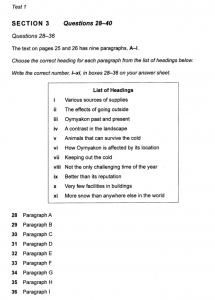

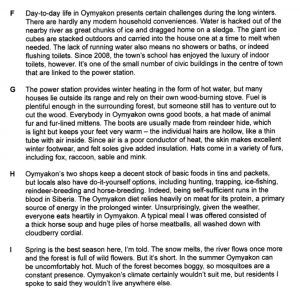
38:28 – END Practice Two: Cambridge 14, Test 2, Part 3
I wanted to complete two sets of questions in this episode to show you how IELTS can raise or lower the difficulty level depending on the type of words they choose to use in the headings. In this practice, you will see that the summaries are all very abstract. This can make predicting the content of the paragraphs harder, which obviously makes finding the answer more difficult too!
Here FIVE of the headings mention “an approach”, so it is essential that you take the time before you read to understand how the information you would find in these paragraphs differs (which Nick and I do in the episode!).
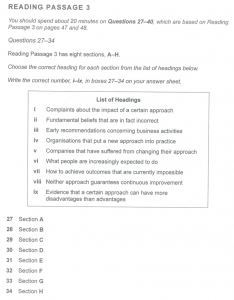
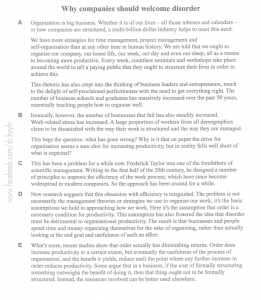
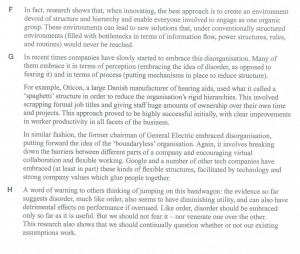
We hope your enjoyed our guide to IELTS heading matching. If you did, leave a comment below or send us an email to let us know what you would like to hear next on the My IELTS Classroom podcast.
You can find all of our video lessons, including a full 9-hour Grammar course, on our main website www.myieltsclassroom.com.
This is where you can also sign up for our IELTS essay correction service or join one of our writing packages. 🚀
